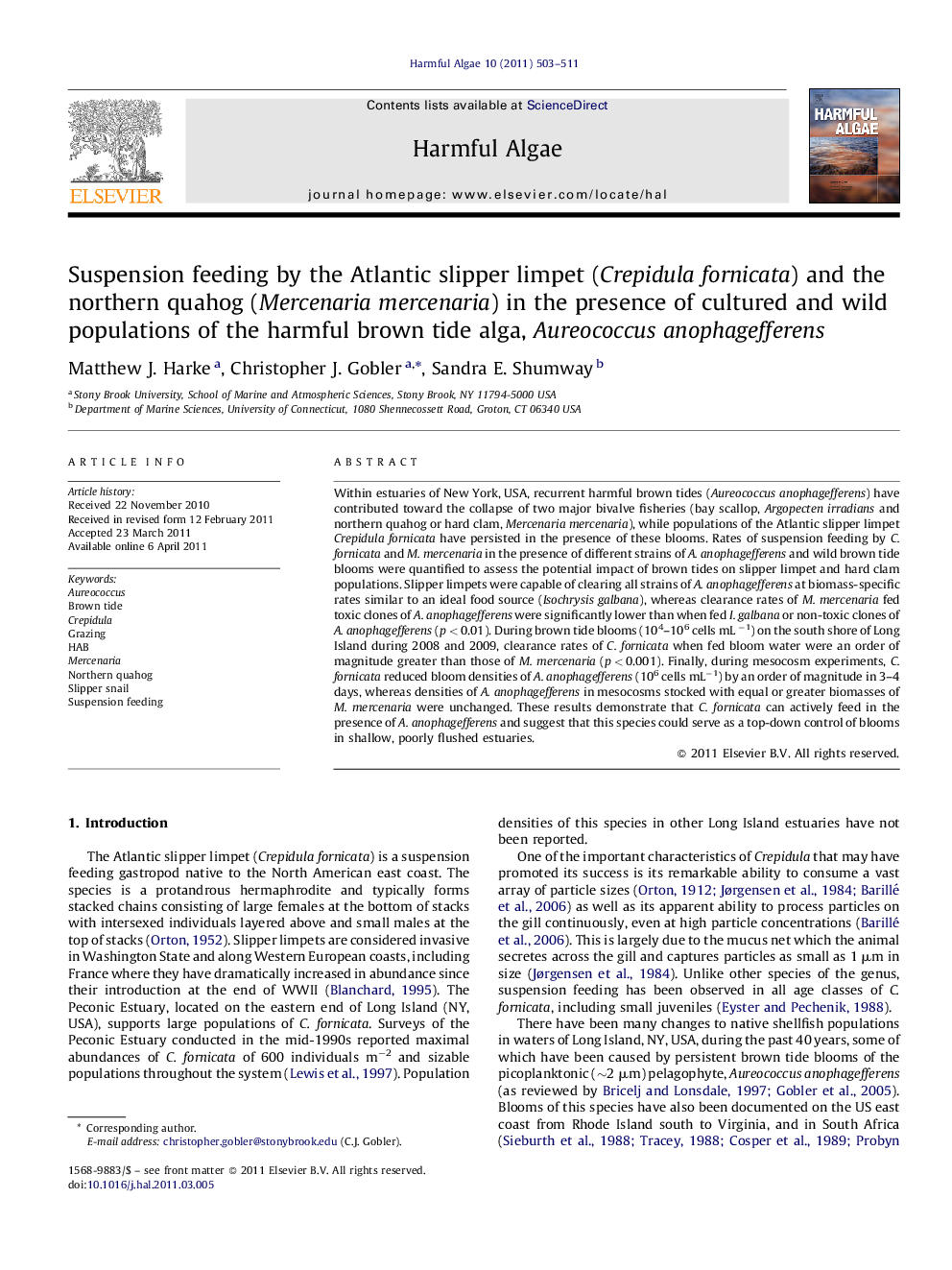| کد مقاله | کد نشریه | سال انتشار | مقاله انگلیسی | نسخه تمام متن |
|---|---|---|---|---|
| 4545746 | 1327468 | 2011 | 9 صفحه PDF | دانلود رایگان |

Within estuaries of New York, USA, recurrent harmful brown tides (Aureococcus anophagefferens) have contributed toward the collapse of two major bivalve fisheries (bay scallop, Argopecten irradians and northern quahog or hard clam, Mercenaria mercenaria), while populations of the Atlantic slipper limpet Crepidula fornicata have persisted in the presence of these blooms. Rates of suspension feeding by C. fornicata and M. mercenaria in the presence of different strains of A. anophagefferens and wild brown tide blooms were quantified to assess the potential impact of brown tides on slipper limpet and hard clam populations. Slipper limpets were capable of clearing all strains of A. anophagefferens at biomass-specific rates similar to an ideal food source (Isochrysis galbana), whereas clearance rates of M. mercenaria fed toxic clones of A. anophagefferens were significantly lower than when fed I. galbana or non-toxic clones of A. anophagefferens (p < 0.01). During brown tide blooms (104–106 cells mL −1) on the south shore of Long Island during 2008 and 2009, clearance rates of C. fornicata when fed bloom water were an order of magnitude greater than those of M. mercenaria (p < 0.001). Finally, during mesocosm experiments, C. fornicata reduced bloom densities of A. anophagefferens (106 cells mL−1) by an order of magnitude in 3–4 days, whereas densities of A. anophagefferens in mesocosms stocked with equal or greater biomasses of M. mercenaria were unchanged. These results demonstrate that C. fornicata can actively feed in the presence of A. anophagefferens and suggest that this species could serve as a top-down control of blooms in shallow, poorly flushed estuaries.
► Harmful brown tides caused by Aureococcus anophagefferens are inhibitory to many bivalves.
► We measured suspension feeding by Crepidula fornicata and Mercenaria mercenaria during brown tides.
► C. fornicata filtered A. anophagefferens in experiments and ecosystems faster than M. mercenaria.
► C. fornicata could serve as a top-down control of brown tide in shallow, poorly flushed estuaries.
Journal: Harmful Algae - Volume 10, Issue 5, July 2011, Pages 503–511